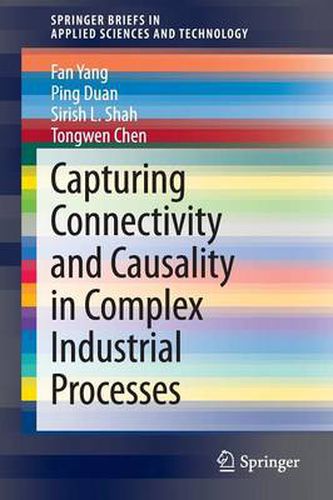Readings Newsletter
Become a Readings Member to make your shopping experience even easier.
Sign in or sign up for free!
You’re not far away from qualifying for FREE standard shipping within Australia
You’ve qualified for FREE standard shipping within Australia
The cart is loading…






This title is printed to order. This book may have been self-published. If so, we cannot guarantee the quality of the content. In the main most books will have gone through the editing process however some may not. We therefore suggest that you be aware of this before ordering this book. If in doubt check either the author or publisher’s details as we are unable to accept any returns unless they are faulty. Please contact us if you have any questions.
This brief reviews concepts of inter-relationship in modern industrial processes, biological and social systems. Specifically ideas of connectivity and causality within and between elements of a complex system are treated; these ideas are of great importance in analysing and influencing mechanisms, structural properties and their dynamic behaviour, especially for fault diagnosis and hazard analysis. Fault detection and isolation for industrial processes being concerned with root causes and fault propagation, the brief shows that, process connectivity and causality information can be captured in two ways:
*
from process knowledge: structural modeling based on first-principles structural models can be merged with adjacency/reachability matrices or topology models obtained from process flow-sheets described in standard formats; and
*
from process data: cross-correlation analysis, Granger causality and its extensions, frequency domain methods, information-theoretical methods, and Bayesian networks can be used to identify pair-wise relationships and network topology.
These methods rely on the notion of information fusion whereby process operating data is combined with qualitative process knowledge, to give a holistic picture of the system.
$9.00 standard shipping within Australia
FREE standard shipping within Australia for orders over $100.00
Express & International shipping calculated at checkout
Stock availability can be subject to change without notice. We recommend calling the shop or contacting our online team to check availability of low stock items. Please see our Shopping Online page for more details.
This title is printed to order. This book may have been self-published. If so, we cannot guarantee the quality of the content. In the main most books will have gone through the editing process however some may not. We therefore suggest that you be aware of this before ordering this book. If in doubt check either the author or publisher’s details as we are unable to accept any returns unless they are faulty. Please contact us if you have any questions.
This brief reviews concepts of inter-relationship in modern industrial processes, biological and social systems. Specifically ideas of connectivity and causality within and between elements of a complex system are treated; these ideas are of great importance in analysing and influencing mechanisms, structural properties and their dynamic behaviour, especially for fault diagnosis and hazard analysis. Fault detection and isolation for industrial processes being concerned with root causes and fault propagation, the brief shows that, process connectivity and causality information can be captured in two ways:
*
from process knowledge: structural modeling based on first-principles structural models can be merged with adjacency/reachability matrices or topology models obtained from process flow-sheets described in standard formats; and
*
from process data: cross-correlation analysis, Granger causality and its extensions, frequency domain methods, information-theoretical methods, and Bayesian networks can be used to identify pair-wise relationships and network topology.
These methods rely on the notion of information fusion whereby process operating data is combined with qualitative process knowledge, to give a holistic picture of the system.